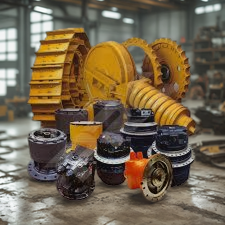The world of automotive engineering is one of constant evolution, a relentless pursuit of perfection where boundaries are perpetually pushed. At the zenith of this pursuit lies a special breed of vehicle: the high performance super car. These machines are far more than mere transportation; they are rolling sculptures, technological marvels, and the embodiment of raw power and passion. They represent the pinnacle of what is possible when design, engineering, and artistry converge, creating an experience that tantalizes the senses and ignites the soul of any enthusiast. To understand these incredible vehicles is to take a journey into the heart of cutting-edge innovation.
The Heart of the Beast: Powertrain and Performance
A super car's identity is forged in its engine bay. The powertrain is the beating heart that gives the vehicle its character and its earth-shattering capabilities. Traditionally, this realm was dominated by large-displacement, naturally aspirated engines—glorious V10s and V12s whose symphonic exhaust notes are the stuff of legend. These engines delivered linear power and an immediate throttle response that connected driver and machine in a uniquely intimate way. However, the landscape is shifting. Turbocharging has become prevalent, allowing manufacturers to extract colossal horsepower and torque figures from smaller, more efficient engines. The result is breathtaking acceleration, with 0-60 mph times now routinely dipping below the three-second mark. More recently, hybridization has introduced a new dimension. Electric motors provide instantaneous torque, filling in any gaps in the gasoline engine's power band and creating a seamless, relentless wave of acceleration. This fusion of technologies ensures that even as the industry moves towards greater efficiency, the quest for ultimate performance never ceases.
Sculpted by the Wind: Aerodynamics and Design
While power is essential, it is useless without control. This is where the science of aerodynamics comes into play. A high performance super car is a masterclass in airflow management. Every curve, vent, and wing has a purpose, meticulously designed to slice through the air with minimal resistance while generating immense downforce. Downforce is the invisible hand that pushes the car onto the road at high speeds, dramatically increasing grip and cornering stability. Many modern supercars feature active aerodynamics, where elements like rear wings, front splitters, and underbody flaps adjust automatically based on speed and driving mode. This allows the car to be slippery and efficient on a straightaway but transform into a high-downforce machine in the corners. This functional necessity does not come at the expense of beauty; instead, it dictates the car's aggressive and dramatic form, proving that in the world of supercars, form and function are one and the same.
The Science of Lightness: Advanced Materials
Enzo Ferrari famously said, "I build engines and attach wheels to them." But an equally important principle in supercar design is the relentless pursuit of lightness. A lower mass improves every aspect of a vehicle's performance: it accelerates faster, brakes harder, and changes direction with greater agility. The key metric is the power-to-weight ratio. To achieve an optimal ratio, manufacturers employ an array of exotic and advanced materials. Carbon fiber is the most prominent, used to construct the chassis (monocoque), body panels, and interior components. Its incredible strength and low weight make it the ideal material for a performance application. Beyond carbon fiber, you will find extensive use of lightweight aluminum alloys, magnesium for wheels and engine components, and even titanium for exhaust systems and critical bolts. This dedication to shedding every possible gram is a core tenet of super car engineering.
More Than a Machine: The Driving Experience
Ultimately, the purpose of a high performance super car is to deliver an unparalleled driving experience. Getting behind the wheel is a full sensory immersion. It begins with the theatricality of the dihedral or scissor doors and the feeling of sinking into a cockpit designed for focus and control. Firing up the engine unleashes a cacophony that evolves into a mechanical symphony as the revs climb. The acceleration pins you to your seat with a force that feels otherworldly, while the massive, often carbon-ceramic brakes provide equally astonishing stopping power. The steering is telepathically direct, transmitting every nuance of the road surface to the driver's fingertips. It is an intense, demanding, and incredibly rewarding experience that is about so much more than just speed. It is about the connection between the driver, the machine, and the road—a dynamic dance of precision and power that few other activities can replicate.
The Future of Performance
The era of the super car is far from over; it is simply evolving. The push towards electrification is undeniable, and all-electric hypercars are already demonstrating performance figures that were once thought impossible. As technology marches forward, we will see further integration of artificial intelligence for dynamic vehicle control, even more advanced materials, and new ways of defining what it means to be a top-tier performance vehicle. Yet, the core essence will remain. These machines will always be aspirational, representing the bleeding edge of automotive technology and the untamed spirit of human ambition. They are a testament to the idea that performance is not just a number, but an emotion, an art form, and the ultimate expression of automotive freedom.






